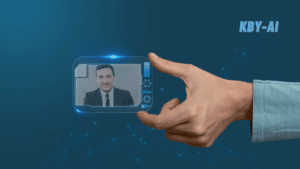Passport Facial Recognition by KBY-AI enhances airport security and streamlines passenger processing. This technology matches facial features with passport photos.
In the evolving landscape of travel, safety and efficiency are paramount. Passport Facial Recognition technology, developed by KBY-AI, stands at the forefront of ensuring these aspects in airports worldwide. By swiftly comparing a traveler’s face to their passport photo, this system significantly reduces the time taken at border control checkpoints.
It not only bolsters security by preventing identity fraud but also enhances the passenger experience with reduced wait times. This innovative use of artificial intelligence is reshaping the way we travel, enabling a seamless transition from check-in to boarding while prioritizing traveler safety. With every scan, Passport Facial Recognition by KBY-AI demonstrates the power of technology to transform traditional procedures into rapid, reliable, and secure processes for the modern traveler.
The Rise Of Biometric Security
Security has leaped forward with biometrics, creating a safer and quicker way to prove who we are. Gone are the days of easily lost or stolen passwords; now, unique individual traits do the unlocking. Biometrics includes fingerprints, voice patterns, and facial recognition, and they’re redefining security. Let’s delve deeper into how biometric security is shaping our world. Remember when a simple key or a swipe card was all you needed? Times have changed. Identification has evolved significantly. Traditional methods lacked the personal touch that biometrics offer. Here’s how the change unfolded:
- Keys and Codes: Physical items or knowledge-based security measures started feeling unsafe. They were easy to lose or guess.
- Cards and Badges: Magnetic stripes or barcodes came next, but even these could be copied or stolen.
- Biometric Revolution: The real change began. Unique physical characteristics brought security into the future.
Now, biometric systems can swiftly and accurately verify an individual. This progress means the protection of sensitive areas and personal data is more robust than ever. Facial recognition stands out in the biometric security world. It uses complex algorithms to verify identity based on facial features. Here’s what sets it apart:
| Feature | Description |
|---|---|
| Speed | Instantaneous comparisons make access almost immediate. |
| Convenience | No physical contact is needed, just a simple glance. |
| Accuracy | Advanced technology reduces errors, enhancing security. |
Facial recognition now integrates into various sectors, from airports to smartphones. Its ability to provide seamless yet secure experiences is unparalleled. Facial recognition, through Passport Facial Recognition –KBY-AI, streamlines travel like never before. Your face becomes your passport, simplifying verification while maintaining high-security standards. It’s not just about getting through an airport faster. It’s about creating a world where security and convenience coexist. As biometrics advance, expect to see them replace outdated security methods. Its blend of uniqueness and ease sets it as the standard. Biometric security, particularly facial recognition, is more than a trend—it’s the future.

Passport Control And Facial Recognition
Passport Control and Facial Recognition have transformed how we cross borders. Together, they make travel safer and faster. Passport control used to mean long lines. Now, facial recognition changes the game.
Integration In Border Security
Security at borders is top priority. Countries embrace facial recognition technology for this reason. It checks travelers’ faces against passport photos. This high-tech tool is quick and reliable.
- Improves security by matching faces with digital images stored in passports.
- Reduces the need for manual document checks, making lines move faster.
- Helps border agents focus on potential risks instead of routine checks.
This tech is smart. It learns over time to spot fraud. It even deals with changes in a person’s appearance.
The Impact On International Travel
Facial recognition has changed international travel in big ways. Travelers feel the difference. They move through airports quicker than before.
- Faster airport processing times mean shorter waits.
- Touchless identity checks reduce the spread of germs.
- Travelers enjoy a more streamlined airport experience.
Airlines and airports love this too. They can handle more passengers without sacrificing security. This tech also makes travel less stressful for everyone.
|
For Travelers |
For Airports |
For Border Security |
| Quicker clearance | Efficient crowd management | Enhanced security |
| Hygienic, contactless processing | Reduced need for staff at gates | Accurate identification |
This table shows how everyone gets a benefit. Travel is smooth, airports run well, and borders stay safe.
How Facial Recognition Works
Imagine meeting a friend in a crowd. Your eyes scan the faces, and boom! You spot them. That’s your brain doing face recognition. Now, tech gives devices a similar skill. Devices use this to match your face to your passport photo.
The Science Of Mapping Faces
Facial recognition technology is like a smart detective. It looks at a face and notes unique points. Here’s how:
- It finds the eyes, nose, and mouth first.
- Next, it measures the distance between these features.
- Then, it creates a map of the face with these measurements.
This map is a facial signature. It is as unique as a fingerprint. The tech then saves this signature.
Matching Faces With Passport Photos
When you’re traveling, customs use facial recognition. Here’s the process:
- You stand in front of a camera.
- The camera uses light to clearly see your face.
- It quickly creates a facial map, like before.
- The system then compares this new map to your passport photo’s stored map.
- If the maps match, the system knows you are you.
This match check happens in seconds. This tech helps keep borders secure and makes travel quicker.
AI: The Engine Behind Facial Recognition
Passport Facial Recognition – KBY-AI transforms how we verify identities. AI drives this cutting-edge tech. It makes passports more secure. Artificial Intelligence (AI) powers these systems, enhancing security and efficiency. Now, let’s explore how AI functions in this realm.
Machine Learning Algorithms In Action
Machine learning is AI’s brain. It recognizes faces among billions. It’s not magic but science and data. Here’s how it works:
- Pattern Recognition: AI spots unique facial features.
- Feature Analysis: It compares these features with vast datasets.
- Data Processing: AI uses powerful algorithms to process data fast.
- Instant Match: It finds the matching face in a sea of data.
Algorithms sift through complex data. They make facial recognition reliable and quick. AI doesn’t get tired. It doesn’t forget. It’s always on.
Training AI For Accurate Identification
Teaching AI to identify correctly is key. It’s like schooling a super-smart child. Here is what the training involves:
- Diverse Photos: AI studies millions of face photos.
- Iterative Learning: AI learns from its mistakes. It gets smarter over time.
- Consistent Updates: New data keeps AI learning.
When trained well, AI exceeds human accuracy. It can spot a face among millions, often more swiftly and precisely than humans. This makes passport control tighter, blocking fraud and speeding up queues.
Enhancing Accuracy In Various Conditions
Imagine a world where standing in line at the airport is a breeze. Passport facial recognition technology –KBY-AI makes this possible. But, can it work perfectly in all types of conditions? Bright sunlight, dim airport corners, or even changes in your appearance – none of these pose a problem anymore. Let’s explore how this innovative feature maintains its accuracy, no matter the situation.

Dealing With Different Lighting And Angles
Difficult lighting and tricky angles could confuse traditional systems. Passport facial recognition now uses advanced sensors and algorithms. These ensure faces are clear and recognizable, even in shadows or bright light. Have a look at the techniques it employs:
- 3D Mapping to capture depth and contour
- Infrared Sensors for low-light conditions
- Adaptive Positioning Technology to recognize faces from various angles
Such features help the system work efficiently, making it a trusted tool for modern travel.
Adapting To Changes In Facial Features
Your face changes over time. Beards grow. Hairstyles change. Glasses come and go. Passport facial recognition – KBY-AI evolves too. It takes these changes in stride thanks to:
- Machine Learning: The system learns from new data to recognize the natural evolution of facial features.
- Dynamic Updating: Regular updates to the software ensure it keeps up with the latest changes in fashion and personal grooming.
Even if you got a new tattoo or a piercing, the system adapts. Your identity remains secure and verifiable. Traveling is now more comfortable and personalized than ever before.
Privacy And Data Security Concerns
As Passport Facial Recognition technology by KBY-AI grows, there are growing concerns about privacy and data security. This technology promises smoother travels but comes at a cost. The data is sensitive, making its security paramount.
Safeguarding Personal Biometric Data
Protecting biometric data is crucial in a digital age. Passport facial recognition systems store unique identifiers. These identifiers need robust security measures.
- Encryption of biometric data ensures safety from unauthorized access.
- Regular software updates help prevent potential security breaches.
- Only authorized personnel should access biometric information.
Data retention policies limit the time personal data stays in the system. They safeguard against long-term misuse.
The Debate Over Surveillance And Privacy
The balance between surveillance and privacy is delicate. Passport facial recognition can enhance security. Yet, it raises surveillance concerns.| Pros | Cons |
|---|---|
| Fast identification at borders | Potential for mass surveillance |
| Reduced document fraud | Risks of privacy invasion |
Regulatory Frameworks Governing Use
International Standards For Biometric Passports
Biometric passports, also known as e-passports, follow specific international guidelines. The International Civil Aviation Organization (ICAO) provides these rules. These standards help keep borders safe and passports secure worldwide.- Machine-Readable Zone: All passports must have this area.
- Chip: A chip in the passport stores the face biometric.
Legal Implications Of Biometric Data Collection
Collecting biometric data comes with legal considerations. Countries have laws to protect your personal information. These laws look at the collection, storage, and use of facial recognition data.| Law | Function |
|---|---|
| GDPR | Safeguards personal data in the EU. |
| HIPAA | Protects personal health information in the US. |
User Experience At Passport Control
The moment travelers reach passport control, they anticipate speed and ease. Thanks to Passport Facial Recognition – KBY-AI, these expectations are becoming a reality. This sophisticated technology embodies the future of seamless travel, enhancing not only security but also passenger satisfaction.Streamlining Airport Procedures
Passport Facial Recognition – KBY-AI is revolutionizing how airports operate.- Quick identity verification reduces the need for paperwork.
- Travelers enjoy a touchless experience, aligning with modern hygiene standards.
- Systems integrate effortlessly with existing airport infrastructure.
Reducing Wait Times For Travelers
Long lines can be exhausting. With Passport Facial Recognition, travelers glide through checks, as the system:- Automatically confirms identities, diminishing queue lengths.
- Allows for expedited processing of passengers.
- Enables staff to address concerns swiftly, thanks to lessened overall workload.
Impact On Passport Forgery And Fraud
Passport Facial Recognition – KBY-AI has revolutionized security measures for travel. This innovative technology offers powerful tools against document-related crimes, making passport forgery and fraud incredibly difficult. With sophisticated algorithms, facial recognition verifies a travelers identity in real-time. This adds a new layer of protection.Combating Identity Theft
Identity theft strikes at the heart of personal security. The introduction of passport facial recognition presents a formidable obstacle for criminals. Each face has unique features that are nearly impossible to duplicate precisely.- Biometric data ties directly to one individual.
- False representations become easy to spot thanks to high-accuracy scanners.
- Passport applications now identify duplication attempts instantly.
Preventing Illegal Entry And Border Violations
Controlling borders gets more robust with facial recognition. Entrants must pass through automated biometric verification. Systems match faces to database images in seconds.- Instant checks reduce human error.
- Stringent entry requirements dissuade unlawful attempts.
- Historical data helps track and predict fraudulent patterns.
|
Aspect |
Before Facial Recognition |
After Facial Recognition |
| Security Level | Low | High |
| Forgery Cases | Common | Rare |
| Border Violations | Frequent | Markedly Reduced |
Technological Advancements In AI And Recognition
Passport facial recognition technology is racing ahead. AI-powered advances are transforming security. They make passport checks fast and reliable. Let’s uncover the latest innovations and peek into the future of biometric technology.Innovations Leading To Better Accuracy
Accuracy is crucial in passport facial recognition.- 3D mapping boosts precision.
- Algorithms now detect micro-expressions.
- Anti-spoofing tech fights fraud.
Future Developments In Biometric Tech
The future shines bright for biometric technology.| Technology | Benefit |
|---|---|
| AI learning from videos | Refines accuracy over time |
| Integration with IoT | Enables smart access control |
| Quantum computing | Offers lightning-fast processing |
Global Adoption And Standardization
The passport checks of tomorrow are not faced with long lines, but with high-tech solutions. Passport Facial Recognition -KBY-AI represents a frontier in seamless travel, embraced universally to ensure safety and efficiency. Global Adoption and Standardization promise an era of consistent cross-border travel experiences.Countries Embracing New Border Control Tech
Nations worldwide are updating checkpoints with Passport Facial Recognition Systems. This tech uses AI to match faces with passport photos. Here’s a glance at the progress:- Singapore: Changi Airport adopts facial recognition for swift clearings.
- United States: Customs and Border Protection deploy biometric entry-exit system.
- Japan: Narita Airport trials facial recognition to shorten wait times.
Striving For Interoperability Across Borders
Standardization is key for interoperable border controls worldwide. The aim is to share traveler data safely and efficiently. International bodies like ICAO and INTERPOL support these efforts. Here’s a representation of the growing trend:|
Organization |
Role in Standardization |
| ICAO | Develops global guidelines for biometric passports. |
| INTERPOL | Facilitates cross-border police cooperation. |
| EU | Spearheads the Smart Borders Initiative. |
Ethical Aspects Of Passport Facial Recognition
When we talk about the tools that keep our borders safe, passport facial recognition stands out. Yet, we must explore the ethical aspects of this powerful technology. Understandably, the concern for ethics shapes public opinion and policy around facial recognition’s use in passport verification and broader surveillance initiatives.Ensuring Fair And Unbiased AI Systems
Accuracy and impartiality are the cornerstones of ethical AI in passport facial recognition technology, commonly referred to as Passport Facial Recognition -KBY-AI. These systems must treat everyone equally, regardless of race, gender, or age. To achieve this, developers need to train AI with a diverse dataset that represents all groups fairly.- Avoiding Data Bias: Data collected should be vast and varied.
- Continuous Testing: Frequent assessments ensure the system remains unbiased.
- Transparency in AI: Clear information about how the system works and makes decisions.
Respecting Human Rights And Freedoms
The right to privacy is a fundamental human right. Passport facial recognition systems must respect this. They should only be used for their intended purposes, like strengthening security, not for unwarranted tracking or profiling. Clear regulations and rigid oversight can uphold these principles.| Principle | Action |
|---|---|
| Consent | Seek permission before collecting facial data. |
| Purpose Limitation | Use the data strictly for passport verification. |
| Access Control | Only authorized personnel see sensitive data. |

Public Perception And Trust In Technology
The Public Perception and Trust in Technology have always been pivotal in the adoption of new advancements. In the realm of passport processing, Passport Facial Recognition -KBY-AI represents a leap forward. Yet, its success hinges not just on technology but also on public confidence. Let’s explore how this trust is being built and the concerns that are being addressed.Building Confidence In Biometric Systems
Biometric systems are becoming part of our daily lives. They secure our phones, our offices, and even our borders. But to fully accept biometric passports, the public must trust them.- Education campaigns highlight their accuracy and efficiency.
- Success stories showcase improved airport experiences.
- Official assurances confirm data protection measures.
Addressing Public Fears And Misconceptions
Myth: Facial recognition is invasive and risks privacy breaches. Reality: Passport Facial Recognition – KBY-AI employs the strictest security protocols. Myth: Biometrics can be easily hacked or fooled. Reality: The technology uses advanced anti-spoofing techniques. Open forums and customer support lines allow concerned individuals to voice their worries and get informative responses. Clear, factual information helps dismantle fears. Feedback loops are essential, too. They help developers improve systems and maintain public trust.Case Studies: Success Stories And Challenges
Today’s world is shifting towards smarter security methods. A key player? Passport facial recognition. This technology brings tales of triumphs and hurdles. Let’s delve into real-world scenarios, showcasing where it excels and lessons learned from its challenges.Examples Of Effective Implementations
Many countries have embraced passport facial recognition, vastly improving border control efficiency. Airports are the front-runners, with impressive results:- Singapore Changi Airport: Quick passenger processing with a high accuracy rate.
- Hartsfield-Jackson Atlanta International Airport: Streamlined entry for millions, showcasing robust tech.
- Dubai International Airport: Cut down on long lines, elevating passenger experience.
Learning From Past Mistakes
Facial recognition is not without its challenges. Past bumps in the road have served as valuable lessons:|
Issue |
Lesson Learned |
| Low Lighting Conditions | Improved sensors and algorithms for accurate identification. |
| Data Protection Concerns | Robust privacy mechanisms to safeguard personal data. |
| Hardware Malfunctions | Investment in high-quality, reliable equipment. |
Cross-industry Applications Of Facial Recognition
Facial recognition technology has rapidly evolved. It now extends its reach far beyond mere identification processes. High-tech algorithms in facial recognition systems have reshaped how industries operate. They facilitate a seamless, secure, and personalized user experience across various sectors. Today, let’s delve into the cross-industry applications of facial recognition and discover its transformative effects.From Airports To Everyday Use
Originally associated with airports for security checks, facial recognition has now stepped into everyday life. It has simplified daily activities ranging from unlocking smartphones to personalized shopping recommendations. This technology integrates into home security systems, providing a convenient way to monitor and control access. Schools use it for attendance and identifying when students board the school bus. With these applications, facial recognition blends seamlessly into daily routines, enhancing both security and efficiency.Expanding Beyond Border Control
Facial recognition once stood as a sentinel at borders, but now, it has burgeoned across multiple industries. In the healthcare sector, it aids in patient identification and customizing care. Banks employ it to bolster security for transactions. Retail stores offer VIP customer services by recognizing loyal customers. It even supports agriculture, enabling farmers to identify livestock. Here’s a glimpse of industries that have embraced facial recognition:- Healthcare: Patient identification, personalized treatments
- Banking: Secure transactions, fraud prevention
- Retail: Tailored customer services, theft reduction
- Agriculture: Livestock monitoring, disease tracking
- Automotive: Personalized settings, theft prevention
The Role Of Human Oversight
The integration of AI in passport control poses unique challenges. In the age of Passport Facial Recognition-KBY-AI, human oversight becomes a crucial anchor. This balance ensures technology enhances security without compromising fundamental human values.Balancing Ai With Human Intervention
Passport Facial Recognition-KBY-AI is rapidly transforming. But, AI systems are not infallible. Human intervention balances the equation, adding a layer of discernment AI alone cannot offer. Human judgment helps resolve uncertainties that AI may struggle with. It leads to a seamless combination of efficiency and reliability in border control operations. Integrating humans in the loop involves several best practices:- Reviewing ambiguous matches
- Addressing exceptions such as outdated photos
- Personalizing interactions when necessary
Training Border Agents For Technological Shifts
Border agents are at the forefront of this technological shift. They must adapt to the evolving landscape of passport controls. Their training now includes modules on the fundamentals of AI and its application in facial recognition technology. Expertise in these areas enables agents to work collaboratively with AI, maximizing efficiency and safety.| Training Focus | Outcome |
|---|---|
| AI Functionality | Understand system capabilities |
| Human-AI Interaction | Effective system management |
| Problem-solving Skills | Resolve AI-detected issues |
Preparing For A Future With AI Identity Verification
Imagine walking through an airport, glancing at a scanner, and breezing through security. This futuristic scenario is closer than you might think, thanks to Passport Facial Recognition -KBY-AI technology. As the world becomes more connected, preparing for a future where Artificial Intelligence (AI) confirms our identity is crucial. It signals a shift to faster, more secure check-ins at borders, and better fraud protection. This technology isn’t just changing how we travel; it’s reshaping the very societies we live in.Adapting Societal Infrastructures
AI-driven identity verification impacts public services, financial systems, and transportation. Governments must adapt infrastructures to integrate this technology seamlessly. Public records, like birth certificates and driver’s licenses, will need updates to align with digital identities.- Spatial design of airports and train stations will change.
- New hardware installations for biometric scans are essential.
- Data privacy laws must evolve to protect citizens.
- Training for personnel to manage these systems will be mandatory.
The Next Steps For Governments And Individuals
For a smooth transition to AI identity verification, proactivity is key. Governments must establish standards and regulations guiding the use of facial recognition technology. They should invest in robust systems that can handle new forms of biometric data.| Action | Responsibility |
|---|---|
| Developing clear guidelines | Governments |
| Ensuring equipment compatibility | Infrastructure Providers |
| Educating the public | Community Leaders |
| Updating personal documents | Individuals |
- Stay informed about how AI technology affects them.
- Ensure personal documents are up-to-date and secure.
- Embrace new forms of identity verification.
- Be proactive in understanding their data privacy rights.


